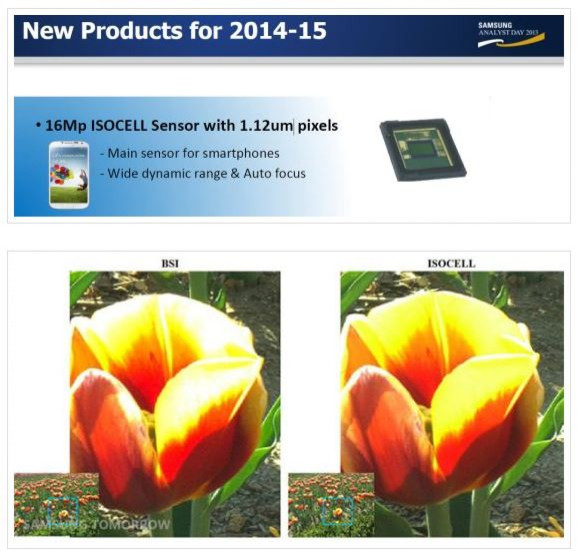Samsung Galaxy S5 Rumors: New Report Claims ISOCELL 16-Megapixel Camera Instead Of An OIS-Enabled Camera

Samsung (KRX:005935) is said to be working on a new camera technology for its upcoming smartphone offerings, including the next-generation Galaxy S handset, unofficially called the Galaxy S5, which is expected to hit markets in 2014.
During the “Analyst Day” conference in Seoul on Wednesday, Samsung announced its plans to offer more AMOLED tablets next year. But, according to a report from G4Games, the South Korean conglomerate also said that a new type of technology, dubbed “ISOCELL,” has been developed for the company’s upcoming smartphones, which will replace the existing back-side illumination, or BSI, technology.
According to the report, Samsung confirmed that a 16-megapixel ISOCELL sensor would be used in the company’s smartphones from 2014 and beyond. The claim corresponds to an earlier report from the Korean media, saying that Samsung’s flagship handsets for the next year, including the Galaxy S5 and the Galaxy Note 4, would sport 16-megapixel cameras.
However, Wednesday’s announcement did not mention the highly talked-about optical image stabilization, or OIS, technology, and instead pointed toward previous reports, which had suggested that the Galaxy S5 might not feature an OIS-enabled camera.

Announced in September, the ISOCELL technology, which Samsung described as a “new advanced pixel technology,” is said to allow for better low-light photography while also producing images with superior color reproduction, sharpness and richness, compared to BSI technology.
There is rising market pressure on companies to devise smaller phone cameras that offer higher resolutions with more pixels and better image quality, which is a challenging task. To meet this challenge, previous sensor-technology developments focused on improving the light absorption of each pixel, and have progressed pixel technology from front-side illumination, or FSI, to BSI.
“Building on these past advances and continuing the push toward higher quality image sensors for mobile devices, Samsung has developed ISOCELL,” the company said. And, here is how Samsung explained the ISOCELL technology:
“ISOCELL technology forms a physical barrier between neighboring pixels – isolating the pixel. This isolation enables more photons to be collected from the micro-lens and absorbed into the correct pixel’s photodiode minimizing undesired electrical crosstalk between pixels and allowing expanded full well capacity.”
According to rumors, the Galaxy S5 could be powered by a 64-bit Exynos processor, and could feature 4GB of RAM, a fingerprint scanner and the speculated Design 3.0 phase metallic chassis. Some earlier reports also suggested that the Galaxy S5 could arrive as early as February 2014.
© Copyright IBTimes 2024. All rights reserved.






















